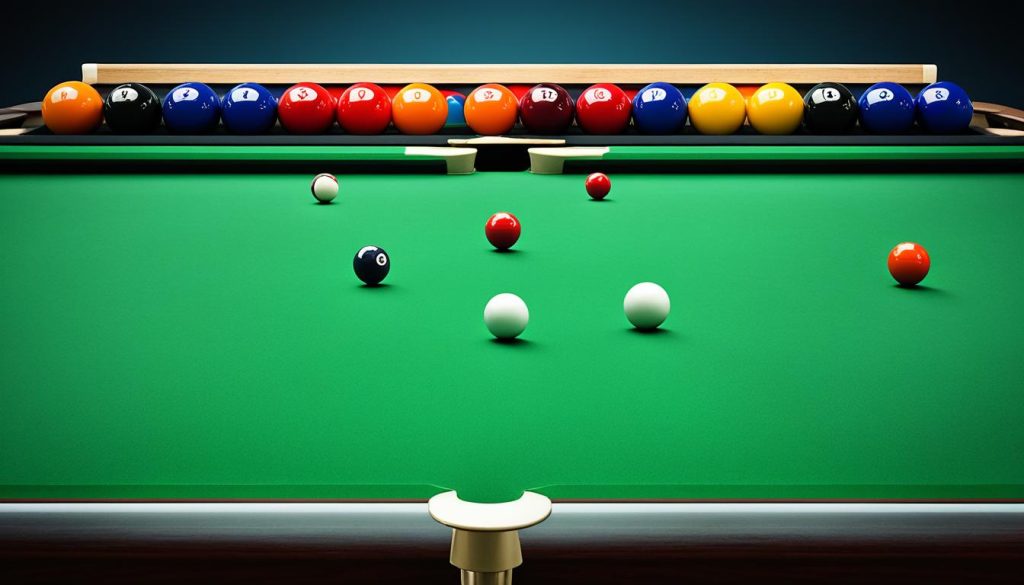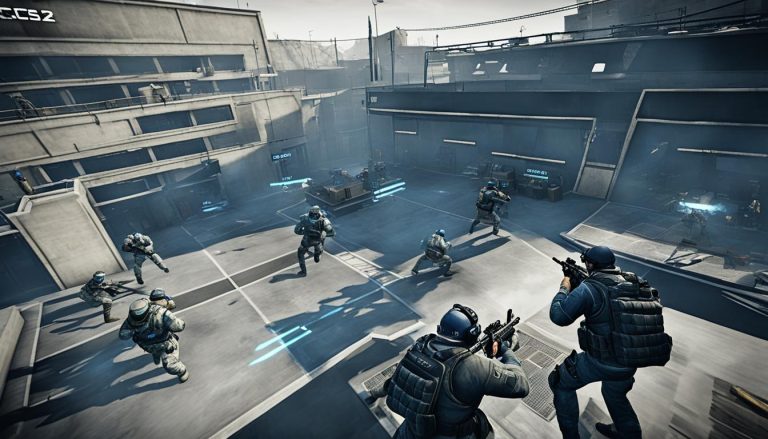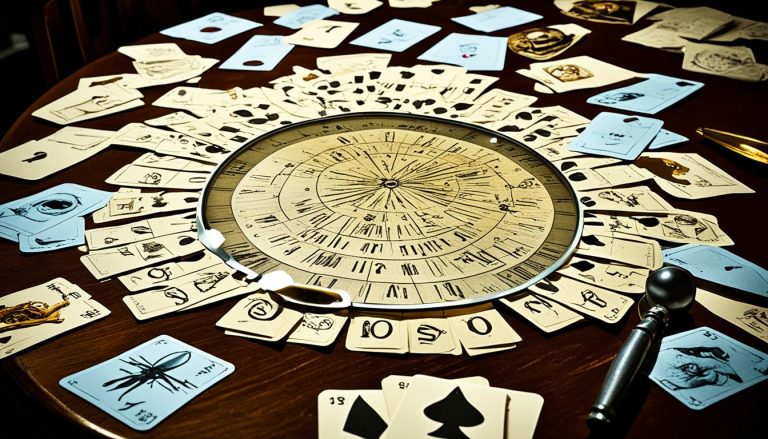Welcome to our guide on how to play snooker! Whether you’re a beginner or looking to brush up on your skills, we’ve got you covered. Snooker is a game that requires precision, judgment, and strategy, and by mastering the fundamentals, you’ll be able to excel on the baize. In this article, we’ll share essential tips, techniques, and strategies to help you improve your snooker game.
Before we dive into the specifics, let’s start with the basics. Snooker is played on a large table with 22 balls, including one white cue ball, 15 red balls, and six colored balls. The objective is simple: pot as many balls as possible to score points. However, there are rules to follow, such as potting a red ball before moving on to the colored balls. Each colored ball carries a different point value, and the player with the highest score wins the game.
To become proficient in snooker, it’s important to develop solid techniques. Your stance and grip are crucial elements that affect your accuracy and control. With the right stance, ensuring a straightened right leg and a bent left knee, you’ll have a stable foundation for your shots. Additionally, maintaining a relaxed yet firm grip on the cue will provide you with the control you need to execute your shots effectively.
As you progress, strategy comes into play. Positioning the balls strategically and planning future shots are key elements of snooker gameplay. By leaving balls that block pockets untouched, you can limit your opponent’s options and increase your chances of success. Safety shots also play a vital role, allowing you to maintain control of the game while keeping your opponent off-balance.
Another crucial aspect of snooker is your cue action. The bridge, which supports the cue, should provide stability and smooth movement. Mastering different bridge techniques, such as the open bridge with straight or bent fingers, will allow you to adapt to different shots. Moreover, developing a smooth stroke with a well-defined beginning, middle, and end is essential for precise and powerful shots.
It’s also important to understand the differences between snooker, pool, and billiards. Although these cue sports may appear similar, they have distinct rules and gameplay. Snooker is played on a larger table with colored balls and specific point values, while pool is played on a smaller table with numbered balls and various game variations. Billiards, on the other hand, use three balls and a different set of rules.
To wrap things up, we’ve compiled top tips to help you improve your snooker game. These include practicing straight cueing, maintaining a still head during shots, watching the ball to the pocket for technique assessment, cueing through the ball, and incorporating a pause before the final delivery of the cue for consistency and elegance.
Now that you have an overview of how to play snooker and essential tips to enhance your game, it’s time to hit the baize and put your newfound knowledge into practice. Remember, snooker is a game of precision and strategy, so keep practicing, stay focused, and enjoy the journey towards becoming a proficient snooker player.
How to Play Snooker?
Snooker is a captivating game that is played on a large table with 22 balls. Whether you’re a beginner or looking to brush up on your skills, understanding the snooker basics is essential. Let’s dive into the fundamental elements of snooker and how to play the game.
Game Objective:
In snooker, players aim to score the highest points by potting balls in the correct order. The game starts with a red ball, which needs to be potted before attempting to pot a colored ball. Each colored ball on the snooker table carries a different point value, ranging from one to seven.
Table Setup:
The snooker table is rectangular and covered with a green baize cloth. It consists of six pockets and is larger than a pool table. The balls used in snooker include 15 red balls, each worth one point, and six colored balls – yellow (2 points), green (3 points), brown (4 points), blue (5 points), pink (6 points), and black (7 points).
Gameplay:
To begin a snooker game, the first player must pot a red ball using the white cue ball. If successful, the player then gets the chance to pot a colored ball, aiming to accumulate more points. After potting a colored ball, it is returned to its designated spot on the table.
The players take turns, alternating between potting a red ball and a colored ball, until all the red balls have been potted. Once the red balls are out of play, only the colored balls remain on the table. The players must then pot the colored balls in ascending order of their value – yellow, green, brown, blue, pink, and black.
Scoring:
Points are awarded based on the number of balls potted. Each red ball is worth one point, while the colored balls carry their respective point values. When a player pots a ball, they receive the corresponding points, and the ball is then removed from the table.
The game continues until all the balls have been potted, or players agree to conclude the match.
| Ball | Colour | Point Value |
|---|---|---|
| Yellow | Yellow | 2 |
| Green | Green | 3 |
| Brown | Brown | 4 |
| Blue | Blue | 5 |
| Pink | Pink | 6 |
| Black | Black | 7 |
Remember, familiarizing yourself with the basic rules and gameplay of snooker is the first step towards becoming a skilled player. Practice your potting skills, refine your cue action, and develop your strategic thinking to excel in this captivating cue sport.
Snooker Techniques
The technique of snooker requires mastering the proper stance and grip. These fundamental aspects of the game lay the foundation for accuracy and control.
Stance
Having the right stance is crucial in achieving maximum accuracy when playing snooker. To maintain stability and optimal alignment, follow these steps:
- Stand with your feet shoulder-width apart, perpendicular to the line of play.
- Slightly bend your knees.
- Straighten your right leg and keep your weight on your left leg (for right-handed players).
- Ensure your body is parallel to the shot line.
By adopting this stance, you’ll have a solid foundation for executing precise shots.
Grip
A relaxed but firm grip is essential for control and accuracy in snooker. Keep these grip tips in mind:
- Place your bridge hand on the table, creating a sturdy bridge for your cue.
- Hold the cue gently, allowing for a fluid stroke.
- Avoid gripping the cue too tightly, as it can lead to unnecessary tension in your arm and wrist.
- Find a grip that feels comfortable and natural to you, and practice with it consistently.
By adopting a proper grip, you can maintain control over the cue ball and execute shots with precision.
Mastering the stance and grip techniques in snooker is a vital step toward improving your game. Developing a stable and aligned stance, along with a relaxed and controlled grip, will enhance your overall performance on the table.

Snooker Strategy: Positioning and Safety Shots
Mastering snooker strategy is crucial for success on the table. Effective positioning of the balls and planning future shots are key elements. By strategically placing the balls, players can control the flow of the game and create opportunities for scoring points.
One important aspect of snooker strategy is positioning. It involves leaving the balls in specific locations to make it difficult for your opponent to pot them. You can achieve this by blocking pockets with balls, making it challenging for your opponent to find clear shots. By reducing their accessible pockets, you limit their scoring opportunities and maintain control of the table.
Another vital element of snooker strategy is the use of safety shots. These shots are designed to keep your opponent off-balance and prevent them from making easy shots. A safety shot involves positioning the cue ball in a way that limits your opponent’s options, forcing them to play defensively rather than potting balls. Safety shots can be especially useful in tight situations, preventing your opponent from gaining an advantage.
To illustrate the importance of snooker strategy, consider the following example:
| Position | Player A | Player B |
|---|---|---|
| Before Safety Shot | Player A has a lead and is in control of the table. | Player B has few scoring opportunities. |
| After Safety Shot | Player A plays a safety shot and leaves the balls in a difficult position. | Player B struggles to find a clear shot and is forced to play defensively. |
| Result | Player A maintains control and increases their chances of winning the frame. | Player B is unable to score points and falls further behind. |
As you can see, proper snooker strategy can have a significant impact on the outcome of a game. It allows you to control the table, limit your opponent’s scoring opportunities, and ultimately increase your chances of winning.
Next, we will explore the techniques and skills involved in snooker cue action and how they can further enhance your gameplay.
Snooker Cue Action: Bridge and Stroke
When it comes to snooker, mastering the cue action is essential for precision and control. Two fundamental elements of the cue action are the bridge and the stroke.
Bridge
The bridge is the foundation of a solid snooker shot. It provides stability and support for the cue, allowing for smooth movement and accurate delivery. There are different bridge techniques, but the open bridge is the most common among snooker players.
The open bridge involves using either straight or bent fingers to form a bridge-shaped support for the cue. The choice between straight or bent fingers depends on the shot being played and individual player preference.
A straight-fingered bridge offers stability and control, ideal for shots that require precision potting or delicate positioning. On the other hand, a bent-fingered bridge provides a wider platform, offering more stability for shots that require power and force.
Here is an illustration of the open bridge technique:
| Straight Fingered Bridge | Bent Fingered Bridge |
|---|---|
 |
Stroke
In addition to the bridge, a smooth and rhythmic stroke is crucial for effective snooker gameplay. A well-executed stroke consists of three distinct phases: the beginning, the middle, and the end.
The beginning involves a controlled backswing, setting up the shot and preparing for the strike. The middle phase is the point of contact between the cue ball and the object ball, where the force and accuracy are applied. Finally, the end of the stroke focuses on the follow-through, maintaining a smooth and flowing movement after the shot.
Developing a consistent stroke that follows this structured approach helps to improve shot accuracy, cue ball control, and overall performance on the snooker table.
By perfecting both the bridge and the stroke, snooker players can enhance their cue action, leading to improved precision and control over the cue ball.
Snooker vs. Pool and Billiards
Snooker, pool, and billiards are often confused but are distinct cue sports. Each game has its own set of rules, table size, and equipment. Understanding the differences between these games is essential for players to choose the right game for their preferences and skill level.
Snooker
Snooker is played on a larger table, usually measuring 12 feet by 6 feet, and is known for its colorful balls. The game uses 22 balls in total, including 15 red balls, 6 colored balls, and a cue ball. Each colored ball has a different point value, ranging from 2 to 7. Snooker requires precise potting skills, strategic planning, and excellent cue ball control.
Pool
Pool, also known as pocket billiards, is played on a smaller table, typically measuring 7 feet, 8 feet, or 9 feet. The game involves using numbered balls, ranging from 1 to 15, along with a cue ball. The most common variations of pool include 8-ball and 9-ball, each with its own set of rules. Pool is usually played in bars and recreational settings, known for its social and competitive atmosphere.
Billiards
Billiards, also known as English billiards, is played with three balls: a red, a white, and a yellow ball. The table used for billiards is similar in size to a pool table but without pockets. The game focuses on scoring points by hitting both the red and the opponent’s cue ball with your own cue ball. Billiards requires precise positioning and strategic play.
Here is a summary of the main differences between snooker, pool, and billiards:
| Game | Table Size | Number of Balls | Point Values |
|---|---|---|---|
| Snooker | 12 feet by 6 feet | 22 | Various (2 to 7) |
| Pool | 7 feet, 8 feet, or 9 feet | 15 | 1 to 15 |
| Billiards | Similar to pool table | 3 | Scoring by hitting balls in a specific sequence |
By understanding the differences between snooker, pool, and billiards, players can choose the game that suits their preferences and skill level. Whether you prefer the precision of snooker, the social atmosphere of pool, or the strategic challenges of billiards, there is a cue sport for everyone to enjoy.

Tips to Improve Your Snooker Game
To enhance your snooker skills and elevate your gameplay, here are some valuable tips:
1. Practice Straight Cueing
One of the key elements of a successful snooker shot is straight cueing. By practicing this technique, you can ensure accurate shots and improve your overall performance on the table.
2. Keep Your Head Still
Maintaining focus and accuracy during your shot is crucial. Keep your head still to minimize any unnecessary movements that could affect your aim and precision. By doing so, you can enhance your control over the cue ball and the intended shot.
3. Watch the Ball to the Pocket
While executing a shot, it’s crucial to track the ball running towards the pocket. This allows you to assess your technique and aiming accuracy, making adjustments if necessary. Paying close attention to the ball’s path will help you develop a better understanding of your snooker skills.
4. Cue Through the Ball
To maximize the impact and follow-through of your shots, it’s important to cue through the ball. This technique ensures that you’re striking the cue ball at the center, resulting in a more controlled and powerful shot. Practice cueing through the ball consistently to improve your snooker game.
5. Incorporate a Pause
Adding a slight pause before delivering the final stroke of your cue provides consistency and elegance to your shots. This pause allows you to gather your focus, align your technique, and execute the shot smoothly. Incorporating this pause can also help improve your accuracy and timing.
By implementing these tips into your practice sessions and gameplay, you can enhance your snooker skills and take your game to the next level.
Continue reading to find out more about the various strategies and techniques for mastering the game of snooker in the upcoming sections.
Conclusion
Playing snooker is a skillful game that requires a combination of technical expertise, strategic thinking, and dedicated practice. By implementing the valuable tips provided in this article, you can significantly improve your snooker gameplay and become a proficient player.
It is crucial to focus on mastering the basics of snooker, such as understanding the rules and fundamental techniques. By developing a solid foundation, you will have the necessary skills to execute precise shots and effective strategies on the baize.
Remember to dedicate enough time to practice regularly and consistently. Snooker is a game that rewards perseverance and commitment. By honing your skills and refining your techniques, you can refine your gameplay and enhance your overall performance.
Embrace the challenge and enjoyment that snooker brings. Engage in strategic thinking, aim for precise shots, and analyze your positioning on the table. With determination and continuous practice, you can navigate the complexities of the game and experience the satisfaction of excelling at snooker.






